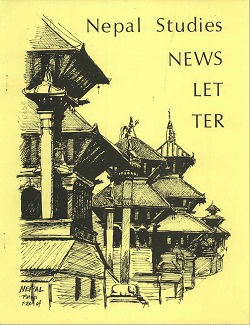Author Biography
Nicole Willock (PhD, Central Eurasian Studies and Religious Studies, Indiana University, 2011) is an assistant professor in the Department of Philosophy and Religious Studies at Old Dominion University in Norfolk, Virginia, where she teaches on Buddhism and World Religions. Her research explores the complex relationships between state-driven secularization, religious practice and literature in 20th century Tibet and China. Her publications include “The Revival of the Tulku Institution in Modern China,” In Reincarnation in Tibetan Buddhism: Birth-Narratives, Institutional Innovation, and Embodiment of Divine Power, edited by Derek Maher and Tsering Wangchuk (Boston: Wisdom Publications, forthcoming) and “Tibetan Monastic Scholars and the Great Proletarian Cultural Revolution,” In Re-remembered Meetings: Post-Mao Retellings of Early Tibetan Encounters with the Chinese Communist Party, edited by Robbie Barnett, Francoise Robin and Benno Weiner (Leiden: Brill Publications, forthcoming).
Abstract
Much scholarly attention has been given to the importance of the Mélong, the first Tibetan newspaper, in the discursive formation of Tibetan nationalism; yet in claiming the Mélong as ‘secular’ and ‘modern,’ previous scholarship has also evaded the press’s Christian and colonial roots. This paper investigates the secularization of the Mélong and the Tibet Mirror Press as an historical project, and as a corollary demonstrates the emergence of a vernacular project of secularism that aligned pan-Tibetan national identity with religious pluralism against the threat of communism. As a Tibetan Christian intellectual, the Mélong’s founder Dorjé Tarchin (1890-1976) creatively responded to divergent and competing processes associated with British colonialism and missionary activity in India which led to the birth of the newspaper in 1925. Based outside of the purview of the xenophobic Lhasa government, Tarchin’s base in the Christian Scottish Mission provided an alternative institution for cultural production outside of Buddhist ones. This contributed to the secularization of Tibetan print culture by moving production away from the Buddhist-monastic elite, introducing a new genre into Tibetan discourse, opening up a public sphere for Tibetans, and supporting vernacular language publications. Despite or because of the press initially being situated in the Scottish Mission Church, the Mélong promoted literacy, religious pluralism, and fostered Tibetan national identity. Over the course of its near forty-year history, the press would undergo processes of institutional secularization with its separation from the Scottish Mission Church in 1946. Parallel to these processes, secularism emerges as a discursive terrain whereby the boundaries of religion, nation, and language are negotiated. I chart Tarchin’s role in negotiating and creating this conceptual terrain, gesturing to how the distinct boundaries between Christianity and Buddhism evident in his early career become more porous against the ‘distinct other’ of communism—the enemy of faith.
Acknowledgements
I am immensely grateful to Columbia University’s Library Research Awards Grant (2012) which greatly facilitated access to the archival materials at the then recently established Tharchin Collection at the C.V. Starr East Asian Library. Tibetan Studies Librarian Dr. Lauran Hartley provided invaluable information on the history of the collection. Both Dr. Hartley and Access Services Manager, Kenneth Harlin, were extremely helpful in making these materials available. Sonam Tobgyal at the Library of Tibetan Works and Archives (LTWA) in Dharamsala and Tashi Tsering of the Amnye Machen Institute assisted greatly in locating materials held at LTWA. Thanks also goes to Amy Holmes-Tagchungdarpa, who organized the conference, “Lama, Spies, Gentleman Scholars, and Trans-Himalayan Traders” at the University of Scarborough in Toronto in April 2013; the research shared and wonderful conversation partners (Amy Holmes-Tagchungdarpa, Paul Hackett, Tina Harris and Anna Sawerthal, among others) greatly benefited this piece. A special thanks to Tashi Tsering and Tsering Shakya for helpful comments to an earlier version of this paper presented at International Association of Tibetan Studies meeting in Mongolia 2012. Thanks also to my former professors, Dr. Dorji Wangchuk (University of Hamburg) and Dr. Rebecca Manring (Indiana University) for assistance with their help in deciphering crucial Tibetan and Hindi phrases. Finally my deep gratitude goes to Professor Elliot Sperling for first piquing my interest in Dorjé Tarchin. Thanks also goes to the Tarchin family and Mr. Fader, whom I have never met, but who made this research possible by sharing their information on the life of Dorjé Tarchin with other scholars. Finally, I wish to thank Holly Gayley and an anonymous reviewer for their valuable comments and helpful feedback on this article.
Creative Commons License

This work is licensed under a Creative Commons Attribution 4.0 License.
Recommended Citation
Willock, Nicole. 2016. Dorjé Tarchin, the Mélong, and the Tibet Mirror Press: Negotiating Discourse on the Religious and the Secular. HIMALAYA 36(1).
Available at:
https://digitalcommons.macalester.edu/himalaya/vol36/iss1/16


